Kangal Dog is a large, powerful, and heavy-boned dog. The Kangal is a breed of large livestock guardian dog originating from the Sivas province of Turkey.
The Kangal dog breed is the national dog of Turkey. The watching and defensive nature of the creatures is well established in their qualities.
Kangal Content overview
- History
- Different names
- Appearance and Characteristics
- Personality and Temperament
- Health & problems
- How to take care
- Puppy Information
- Puppy price
- Things to consider adopting a puppy
- Advantages & Disadvantages
- Questions related to Kangal dog
- Photo gallery
History of Kangal
When you study the history of Kangal Dogs, you may not realize any documents concerning them. There are many rumors concerning Kangal dogs; per one rumor, the dog was derived from lion and tiger throughout Assyrian and Babylonian periods and were petted so as to supply protection against wild animals and use in wars and were full-grown up with care, rather like any Anatolian Shepherd dog.
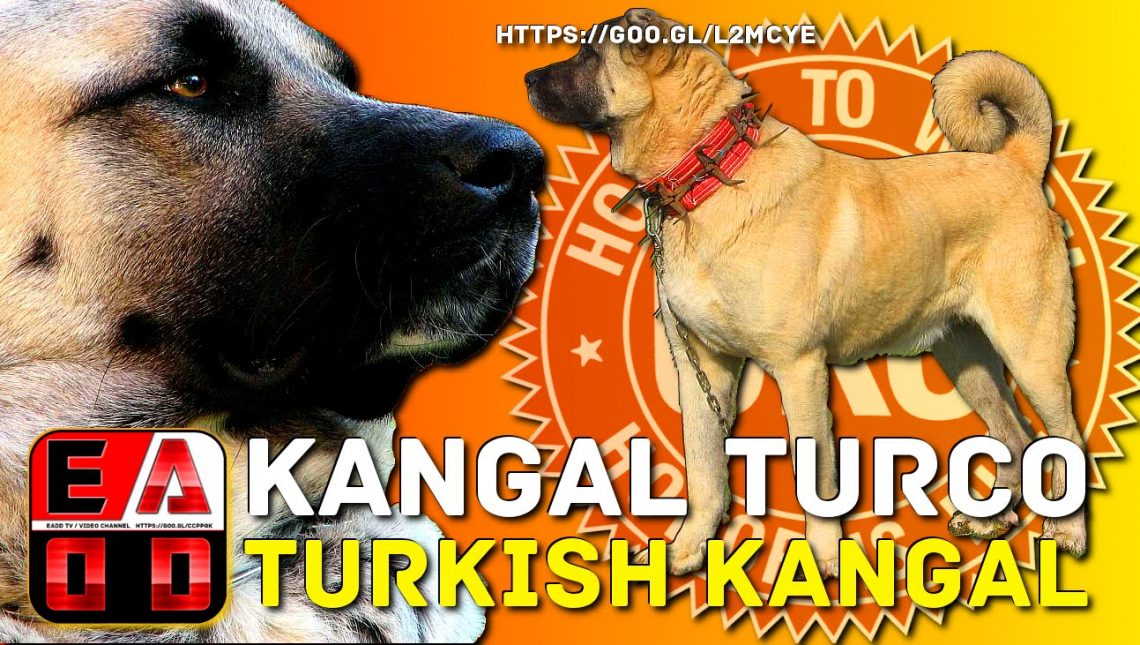
The Kangal is an ancient livestock guard dog that was created in the 12th century in the district of Kangal in the Sivas region of Turkey.
It has a special cultural and historical place in Turkish society and is highly prized by the people. The Kangal is widely regarded as Turkey’s national dog. It has even been found on Turkish postage stamps and coins.
The Kangal has been included in the same family as the American Mastiff and Bullmastiff, and it is thought to be related to early mastiff-type dogs depicted in Assyrian art.
The Kangal, on the other hand, developed its distinctive size, strength, temperament, and personality through selective breeding over hundreds of years.
The general confinement of the Sivas-Kangal district has kept the Kangal Canine liberated from crossbreeding and has brought about a characteristic variety of exceptional consistency for all intents and purposes in demeanour and conduct.
Even though the landowners and chieftains of the area prized the Kangal breed, including the Aga of Kangal, most villagers and shepherds bred them because they needed guardians to keep their flocks of sheep and goats safe from wolves, bears, and jackals.
Because wolves became this breed’s greatest foe, many shepherds and farmers wear spiked collars on their dogs to keep them from being bitten by wolves.
Origin: Turkey
Today, breeding kennels run by the Turkish government and academic institutions breed Kangal dogs and meticulously maintain pedigrees. In fact, Sivas, the region from which the breed originated, is home to two government breeding centres.
In an effort to discourage unregulated breeding practises and the breeding of Kangals for dogfighting, Turkey has banned the export of Kangals.
Several Kangals were exported to other nations with breeding programmes before their export was made illegal in Turkey. The Kangal was first seen in the United Kingdom in 1965, and the first litter of English Kangals was born in 1967.
In 1985, the Kangal was introduced to the United States, where it became popular for its ability to protect cattle, sheep, and goats on large farms. The United Kennel Club officially recognised the breed in 1998.
The English breeders kept breeding exclusively Kangal lines because they adhered to the original Turkish standard for their dogs. The majority of early imports to Australia, with a few exceptions, can be traced back to these bloodlines.
In Australia, the Kangal Dog Association was established in December 1996.
The Turkish description of the breed that was prepared and signed by Turhan Kangal, a leading breeder at the time, in 1984 served as the basis for the development of the Australian National Kennel Council’s accepted Standard for the Kangal Dog.
Different names or Types
All names
- Kangal
- Karrabash
- Turkish Kangal Dog
- Sivas Kangal
Recognized Names
The Kangal Dog is not currently recognized by the AKC and it was only recognized by the UK Kennel Club in 2012 as part of the Pastoral Group.
Recognition
- American Canine Association – ACA
- American Canine Registry – ACR
- United Kennel Club – UKC
- American Pet Registry, Inc – APRI
- Continental Kennel Club – CKC
- Dog Registry of America, Inc –DRA
- Kangal Dog Club of America – KDCA
- National Kennel Club – NKC
Appearance & Characteristics
The Kangal Dog is not as heavy as some other Mastiff breeds, allowing it greater speed and agility than larger dogs. A male Kangal dog’s head appears to be similar to that of a lion’s. The narrower head of a female gives the dog an elegant appearance.
This Dog is a large but active breed. Height at the withers for males is between 75 and 85 cm while it is 65–75 cm for females. A male between 50 and 65 kg and a female between 40 and 55 kg are considered in a good working dog weight.
Breed basic characteristics
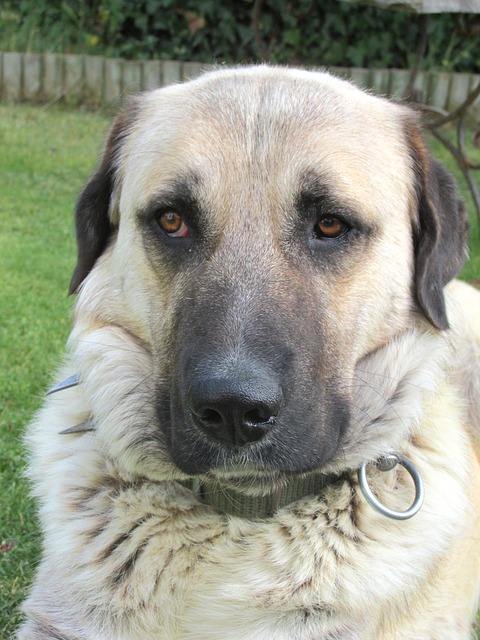
Country of Origin: Turkey
Size: Giant
Dog group: Flock Guardian
Lifespan: 12 to 15 years
Trainability: Easy to train
Friendliness: Good with Kids
Exercise Needs: Daily
Energy Level: Very active
Grooming: little grooming
Barking: occasionally
Protective Ability:
Hypoallergenic Breed: No
Space Requirements: Large yard
Compatibility With Other Pets:
Litter Size: 5 to 10 puppies
Speed: 50 km, per hour
Kangal dog Height & Weight
Male: 75 to 85 cm
Female: 65 to 75cm
Male: 50 to 65 kg
Female: 40 to 55 kg
Sound
Behavior
Sivas Kangal Dogs are generally friendly with visitors and often get along very well with children.
Size, Proportion, Substance
Size: The weight of male Kangal is 110 to 145 pounds while females weigh from 90 to 120 pounds.
Proportion:
Substance:
Serious Faults:
Head
This breed is easily recognized by its massive head, dark muzzle and curled tail which is carried up and over the back. The head is large and moderately wide with drop ears. A properly proportioned Kangal Dog is slightly longer. The female’s head is somewhat more refined than the male’s head.
Faults: Short, heavy neck; overly long neck; exaggerated dewlap.
Skull: It must not be flat. Should be rounded from all sides. Orbital arches are visible but are not overly pronounced.
Muzzle: Is shorter than the skull. Nozzle length is 40-44% of head length. Nozzle width in the area where skull region turns to nozzle region is 24-38% of head length.
Eyes: Rather small in proportion to the skull, set well apart and deep, somewhat round in shape, showing no haw. Color from golden to brown. Eye rims black.
Ears: Medium sized, triangular in shape, rounded at the tip, flat to the skull and carried pendant.
Nose: must not be above or below the nozzle line. It must be large with nostrils of sufficient size.
Teeth: Jaws must be well developed and powerful. Teeth are regularly arranged in the jaws. Powerful teeth.
Lips: Must be well adhered to the bone basis. Are of medium thickness. The upper lip slightly overhangs over the lower lip. The joining of the lips is weakly pronounced.
Serious Faults:
Neck, Topline, Body
Neck: The neck is powerful and muscular, moderate in length, slightly arched, and rather thick. Some dewlap is present.
Topline: Must be strong and broad, not too long. In motion, the top line should be as still as possible.
Body: The body is powerful and muscular. The road of the rear inclines terribly slightly downward from the withers, levels, so rises by a small overarch the short, muscular loin that blends into a moderately short and slightly sloping croup.
Serious Faults: Narrow or poorly muscled chest; narrow rib cage; barrel chest; long back or long line; steep croup; overweight or lack of muscle.
Forequarters
Shoulders: The shoulders are well muscled and moderately angulated. The front quarters are slightly heavier in proportion to the hindquarters.
Forelegs: The forelegs are long, well boned, and set well apart, with strong, slightly sloping pasterns. The elbows move freely and close to the sides.
Feet: The feet are large with the front feet somewhat larger than the rear feet. They are either rounded or oval in shape with well-cushioned pads and toes that may be webbed.
Faults: Loose shoulders or elbows in mature dogs bowed front legs, feet that turn in or out; chest too wide or too narrow
Hindquarters
The hindquarters are powerful and well-muscled although somewhat less substantial than the forequarters.
Rear Legs: The rear legs are well-boned and moderately angulated at the stifle and hock joints.
Hind Feet: The hind legs are parallel when viewed from the rear.
Tail: The tail, which is typically curled, completes the distinctive silhouette. Long bone reaching at least to hock joint. Set on rather high. When relaxed, carried low with slight curl; when alert carried high with the end curled over back.
Faults: Poorly muscled thighs; insufficient or overangulation at stifle or hock; rear feet turning in or out.
Coat
The breed’s double coat comes in colors ranging from fawn to steel gray depending on the outer coat’s dark colored tips. The under-layer provides insulation against both severe Anatolian winters and the fierce summer sun, while the outer-layer repels water and snow. This combination of coat allows it to regulate its core temperature more efficiently, while the coat is dense enough to repel rupture from wolf bites.
Shedding:
Color and Markings
The Kangal Dog has a black mask and black velvety ears that contrast with a whole body color which may range from light dun to gray.
Coat Color and Markings
The coat is generally fawn or tan in color with a black facial mask and black shading on the ears.
Gait: The Kangal Dog’s movement reflects the breed’s combination of strength and agility. Its natural gait is relaxed and efficient with strides of moderate length.
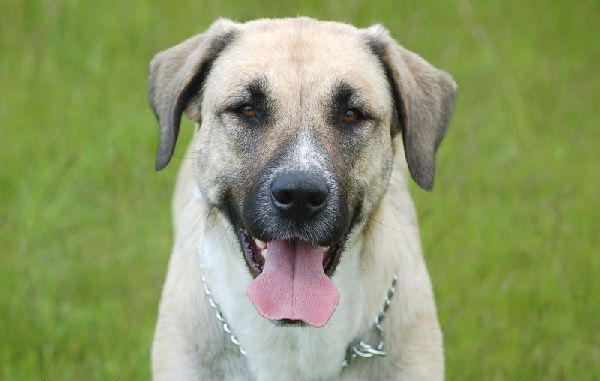
@PetGuide
Personality and Temperament
Personality of Kangal dog
The Kangal Dog is a fairly calm and controlled breeding. These dogs do tend to develop an independent streak, however, is proper training and socialization is not achieved from a young age. The Kangal Dog has the strength, the speed and also the spirit to intercept and confront threats to the flocks of sheep and goats that it guards in both Turkey and the New World. These dogs are good with children, but may not be good with other animals.
Temperament
The Kangal Dog is first and foremost a guardian dog. It’s a large and powerful breed, often used in Turkey to guard against predators. The Kangal dog is calm, controlled, independent, powerful and protective. They may be aloof towards strangers, but a well-socialized Kangal Dog is friendly with visitors and especially children.
They make good guardians of livestock and humans alike, but they may not be suitable for inexperienced dog owners, as the independent intelligence of the Kangal makes for a difficult pupil.
Activity Requirements
The Kangal Dog is a large dog and needs plenty of time to stretch its legs and work off its energy during the day These dogs are not overly active but they do require outdoor space and daily exercise.
Behavioral Traits
Kangal Dog is an active working breed used to guard sheep and livestock. Steady and bold without undue aggression, independent, hardy, very trainable. The Kangal Dog is primarily a sheep-guard.
Trainability
The Turkish Kangal could be a very smart dog and a quick learner. As such, their coaching should begin early and it’s to be consistent and continuously honest throughout a dog’s life in order that they perceive what is expected of them. They prefer to be unbroken busy and thrive in an exceedingly a lot of rural atmosphere wherever they’ll go around a secure back garden whenever they’ll.
Health & problems of Kangal
Health
The Kangal Dog is generally healthy, but like all dogs the Kangal Dog breed is prone to certain minor conditions including benign tumors, entropion and hip dysplasia. The average lifespan of the Kangal Dog is between 12 and 15 years.
Health Problems
The Kangal Dog is typically a healthy breed and, as long as they have been bred responsibly, they do not have many congenital conditions. Like all dogs, the Kangal Dog breed is prone to certain minor conditions including benign tumors, entropion and hip dysplasia.
Kangal Dog Flea And Tick Issues
Daily, regular inspections of your Turkish Kangal dog for fleas and ticks in the summer are critical. Remove and find fleas using a flea comb. There are several new methods of tick and flea elimination. Consult your veterinarian about her or his recommendations.
Feeding Plan
- Turkish pups between eight and twelve weeks old need four bowls of food in a twenty-four hour period.
- When your Sivas Kangal dog reaches his 1st birthday, one meal in a day is enough.
- Many times Turkish Kangal dogs, however, prefer 2 lighter meals. It’s your job to learn your Kangal dog’s eating tendencies.
- Feed Sivas Kangal dog puppies 3 to 6 months old three meals every twenty-four hour period.
- Feed puppies six months old to one year 2 meals in a twenty-four hour period.
Living conditions
The Kangal Dog is not recommended for apartment life. It must have space to roam, so a large yard is a necessity. If this dog is kept cooped up indoors, it may become lethargic and appear depressed.
How to take care?
Exercise
This breed needs exercise and mental stimulation. Working dogs with acreage will exercise themselves by patrolling the property and protecting their livestock. A Kangal Dog does not need to run 20 miles a day in order to be in good condition, but they do need regular, steady exercise in order to be able to spring into fast action if an intruder threatens their livestock.
Grooming & Bruising
This Breed needs least grooming, the coat will need detailed brushing during shedding season, it sheds twice a year. The rest of the year it will need less care and maintenance. It is seasoned heavy shedding breed.
Once your Kangal dog has had a cleaning done by a professional, her mouth can be maintained by eliminating table food, feeding a special diet focused on maintaining dental health and brushing regularly.
Dental Health check up
Proper dental health care is as important for every dog similarly it is important for this Dog. If you want to adopt this dog, then it is very important to take care of his teeth.
Brush your dog’s teeth at the same time every day, making their daily routine training very easy. Don’t force your dog’s mouth open like you would give them a bell. Instead, gently place the brush between their lips and teeth.
Love & affection
Love and affection are useful for every dog. If you give a love and affection to your Kangal than the dog will love you back. Your Kangal puppy will be a member of your family, So Give lots of love and affection for your cute puppy. Most importantly, spend time with your dog because that your dog needs love and affection.
Feed Healthy food
Feeding is a one of the most important for dog health care. Feeding healthy and proper food is a way to keep healthy your Kangal. So give a healthy food will be necessary, then feed your dog best and healthy food.
In this day there are many healthy foods are available in the market so that you can choose any healthy food for your dog. Because healthy food is the most important for dog health care.
The following items should never be fed to Turkish Kangal dog:
- Alcohol, beer, wine or liquor
- Chocolate, coffee, or tea
- Grapes or raisins
- Moldy or spoiled food of any kind
- Onions, chives and garlic
- Poultry bones
- Salt & salty foods
- Tomato leaves, stems or unripe fruit
- Yeast dough
Poisons And Medications
When you believe your dog has ingested a poisonous substance, notify the veterinarian or the American Society for the Prevention of Cruelty to Animals, Poison Control Center at (888) 426-4435 for 24-hour animal poison assistance.
Puppy information
Kangal Puppy Training
The Kangal puppy required an outstanding experience owner who knows how to command on dogs and training as well.
Kangal is an animal of the plains and must be trained in plains or similar locations. It’s a creature of the night and must be trained at night. Kangal must be trained by his master, live with his master and work with his master.
Training crate
You absolutely need to have a Kangal-sized crate, and you need to train your dog to LOVE the crate. Have it ready before you get your puppy or dog, and use it daily until your dog thinks the crate is awesome.
First, crate training is the most effective and humane way to train your puppy not to soil in your house. If you confine your puppy when you are not watching her, and take her immediately outside to potty before she gets time to play indoors–you will prevent accidents.
Behavioral training
Behavioral training is a very important for any dog. At some point in time all of us dog owners need to administer some dog behavior training. Behavioral training is a very helpful for taking care of the dog.
First of all, if you want to train your Kangal puppy so find out some common behavioral issues like briking, aggression, food guarding, howling, mouthing and chewing, separation anxiety, etc and stop this behavioral issues and train your dog easily.
Obedience training
This is a one of the basic and most important training for any dog. There are 3 methods of training that we use with your Kangal puppy, all begins with a strong foundation in the core 5 obedience commands: come, sit, stay, heel, down. Every dog should know these 5 basic obedience commands Because it is very necessary for obedience training.
Kangal Puppy price
Average $600 – $800 USD
Find a dog or puppy
PuppyFinder.com is proud to be a part of the online adoption community. Browse through thousands of Dogs for Adoption, listed by Dog Rescue Organizations and individuals, to find your match.
Find a breeder
This is a listing of breeders who are Members in Good Standing with the Kangal Dog Club of America, and who have signed the KDCA Code of Ethics for members and breeders.
Banks Mountain Farm
Bob and Stuart Richens
224 Thompson Street, #104
Hendersonville, NC 28792
Phone: (828) 685-1170
Email: srichens@banksmountainfarm.com
Web: www.banksmountainfarm.com
Sivas Regal Kangal Dogs
Sue Kocher
Raleigh, North Carolina
Phone: 919-870-0050
Email: beautdogs@gmail.com
Web: www.regalkangal.com
Kangal Dog Town
Mary Hughes
Gloucester, MA
Phone: (978) 281-6703
Email: happycolors1@comcast.net
Web: www.kangaldogtown.com
Kangal rescue
Kangal rescue Luke: The beautiful sable colored rescue Kangal Luke!
Located in Michigan. – Email: happycolors1@icloud.com
Contact the Single Registration Committee of the Kangal Dog Club of America:
| Name | Contact & Address | |
| Cedric Giraud | (519) 925-0955 | cedhgiraud@gmail.com |
| Sue Kocher | Raleigh, North Carolina | beautdogs@gmail.com |
| Jan Dohner | Dexter, MI | jdohner@gmail.com |
| Mary Hughes | Gloucester, Ma | happycolors1@comcast.net |
Things to consider adopting a pug dog
- Before you adopt a Kangal dog puppy, consider how much time your new family member will spend alone. Remember, a puppy requires constant attention.
- Kangal dog puppies are super cute, but simply put, puppies can be adorable, relentless machines of destruction.
- Before you adopt a puppy, ask yourself if you are available to walk your dog several times throughout the day.
- You also have the advantage of knowing that your dog is physically able to “hold it” for several hours at a stretch.
- Ask anybody who has adopted an adult dog then after adopts an adult dog.
Pros and cons of Kangal dog
Pros
- It’s Protective and Alert dog breed.
- Kangal Dog may be a massive, powerful, heavy-boned dog
- Excellent Guard dog
- Easy to train
Cons
- They just get distracted too easily.
- Not good for first time owner
- Not good for Apartments or small house
- Not safe with kids
- Need High Exercise
Questions related to Kangal dog
1. Is the Kangal dog good for first time dog owner?
Kangal dog is not recommended for inexperienced or first-time dog owners.
2. Is the Kangal dog good with kids?
They are very gentle with children despite their large size—a male can weigh more than 140 pounds—and frequently project their behaviors as guardians of livestock onto children.
3. Do Kangal dogs bark?
Yes, Kangal dogs bark too much.
4. Can Kangal live in an apartment?
The dog is definitely not a good choice for apartments or smaller living spaces because of its size.
5. Are Kangal dogs safe to leave alone?
They might not always want to be held in your lap. In fact, as long as they have access to water, food, and exercise, they will want you to leave them alone 90% of the time.
Photo gallery
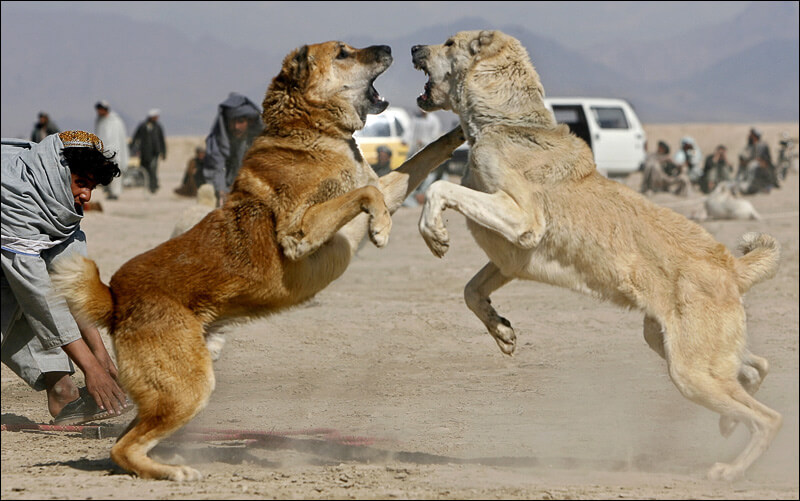
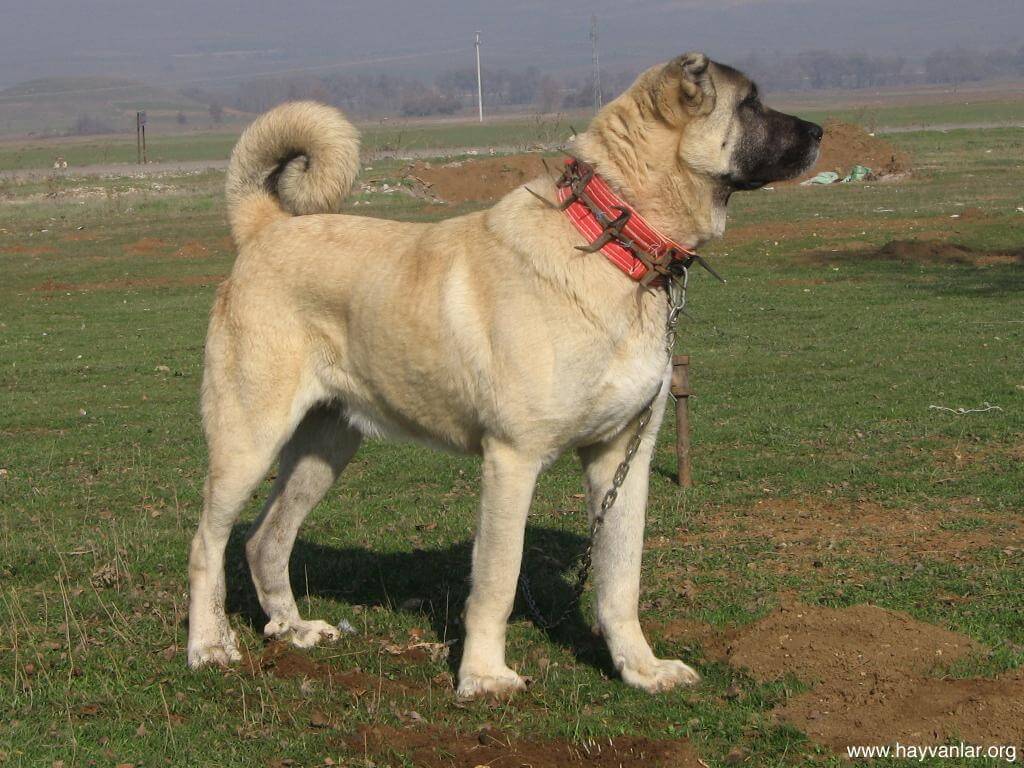
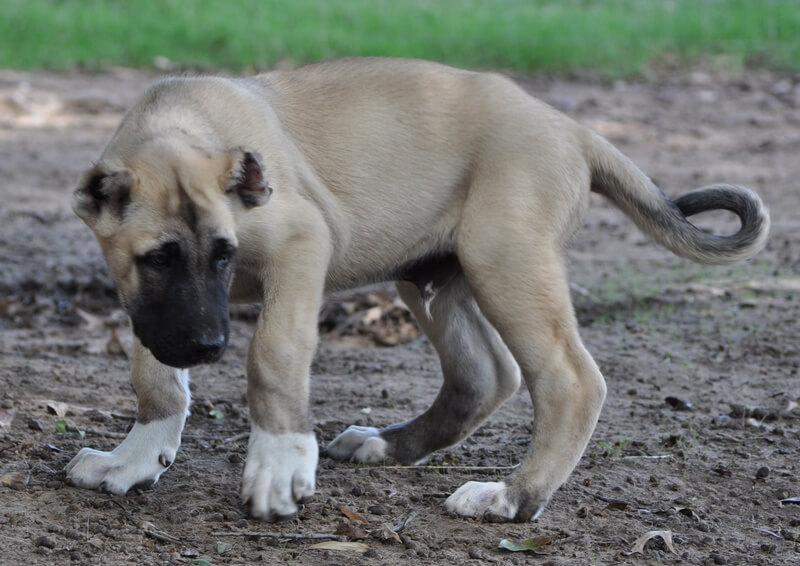
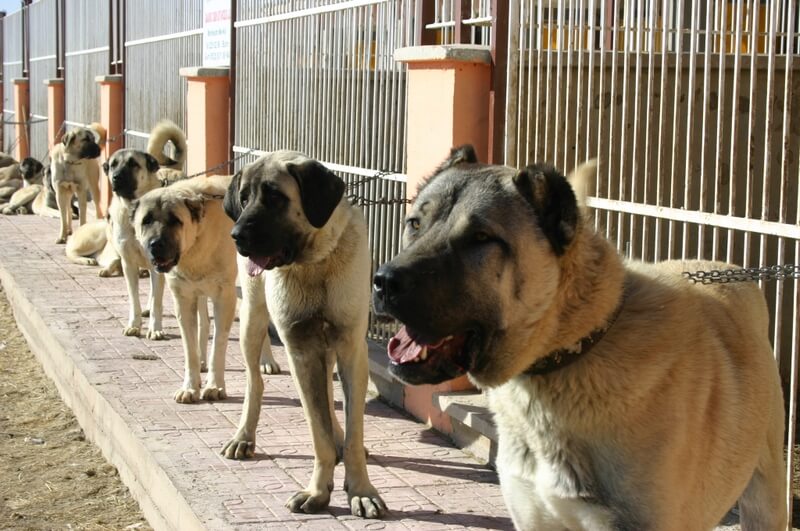
@Bodybuilding.com
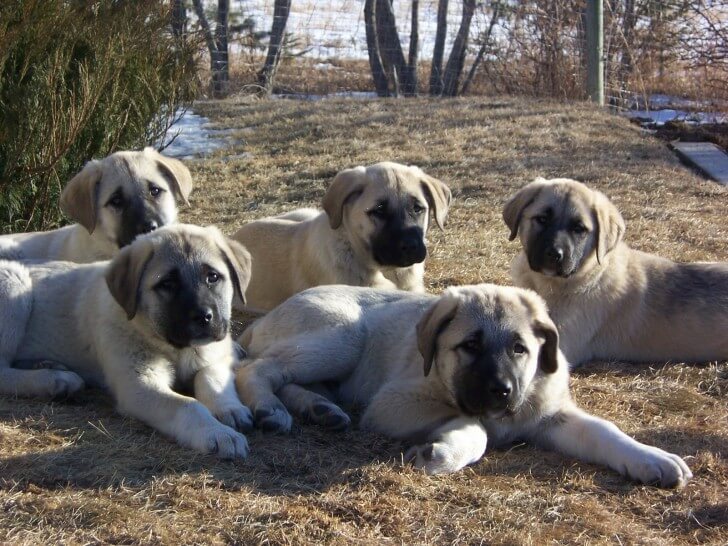
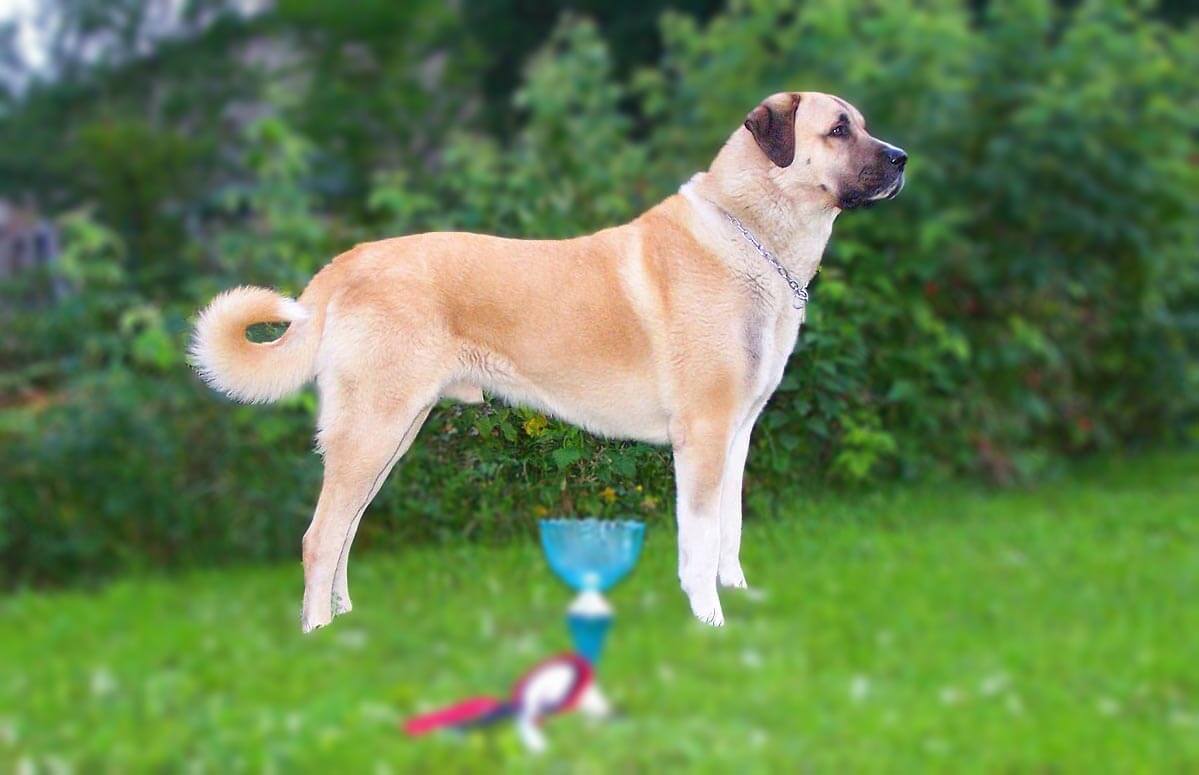
Did you like this kangal information? Share this post, and let us know what you think by commenting below.
Also read: Top 10 benefits of having a Beagle